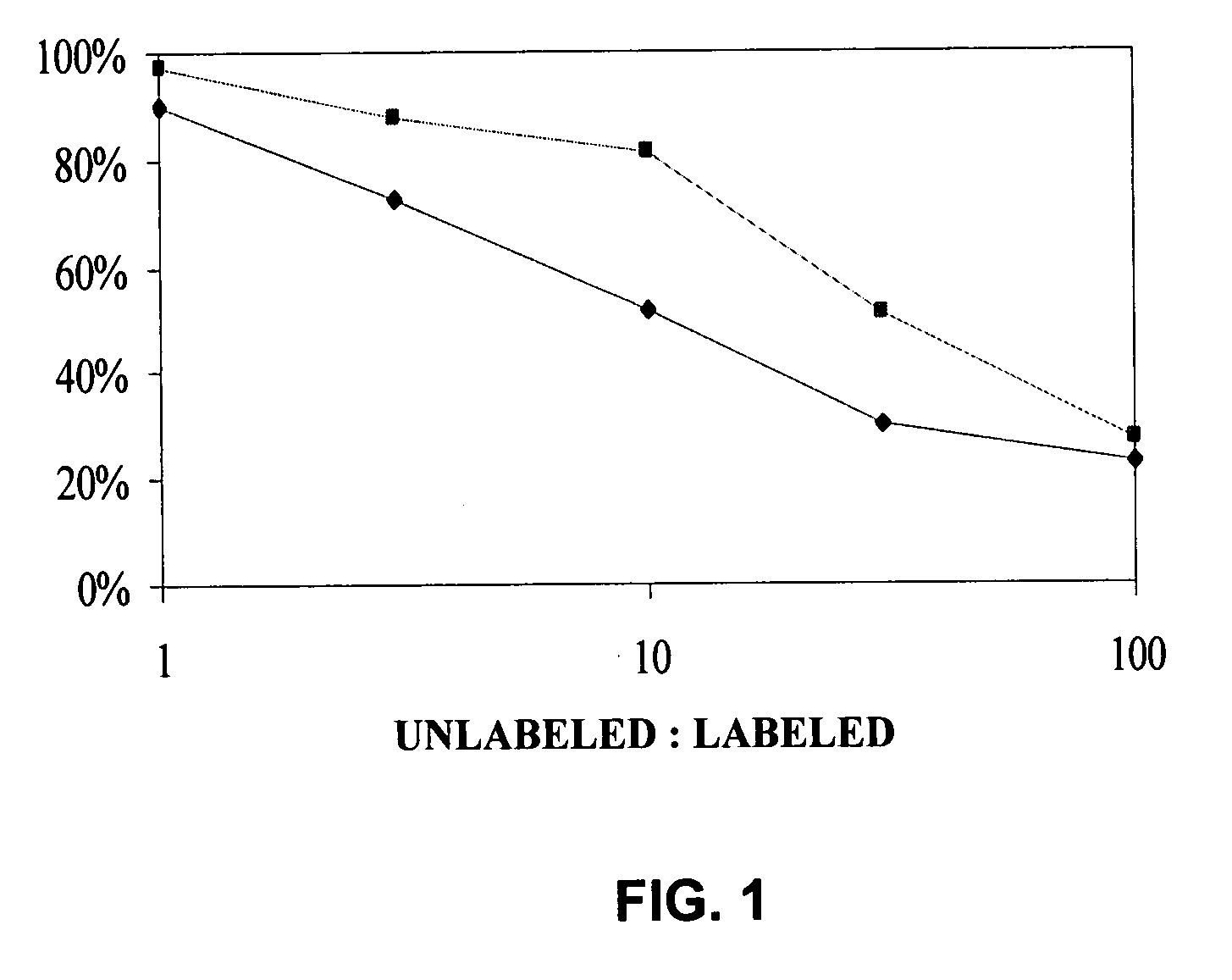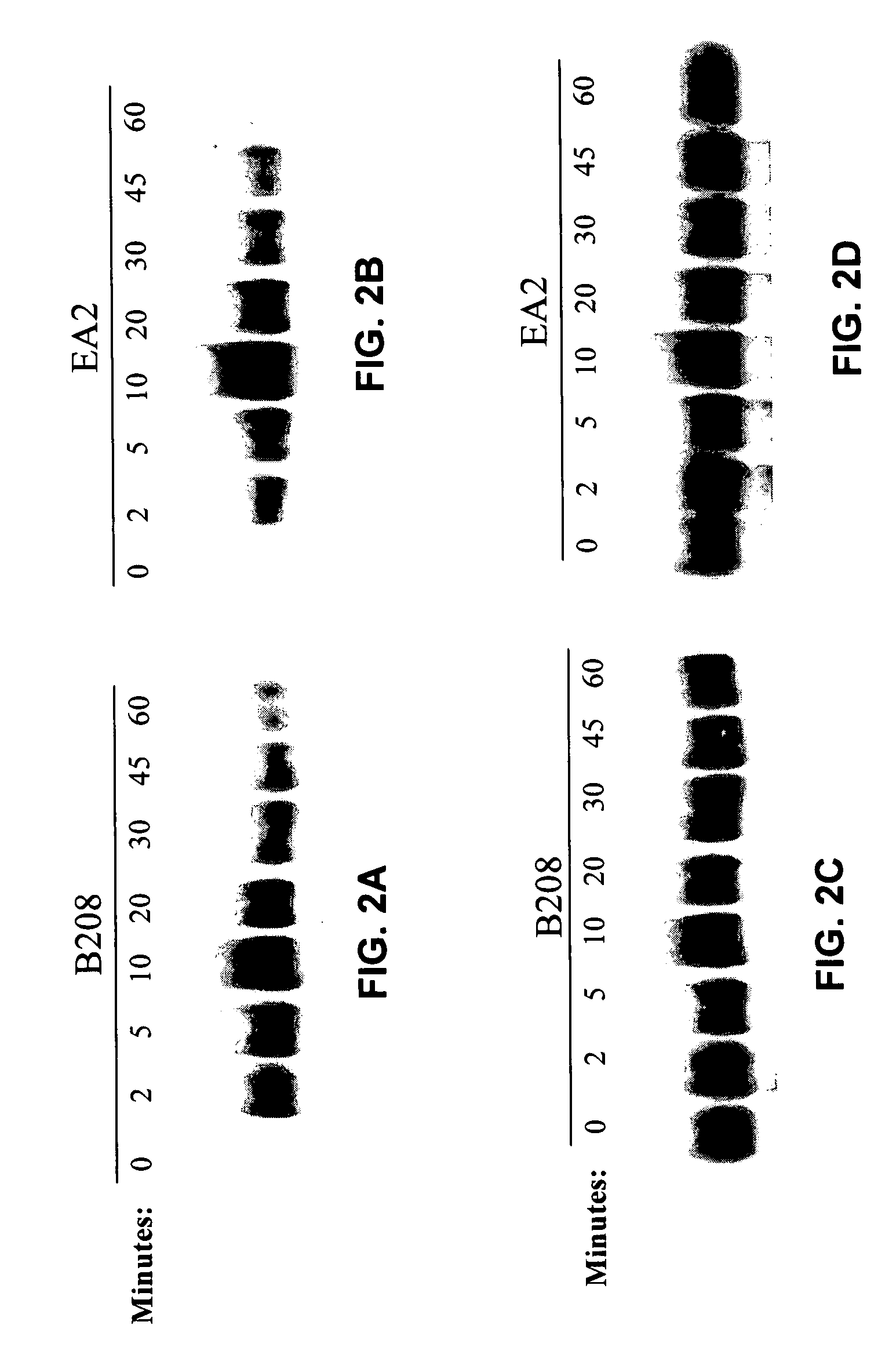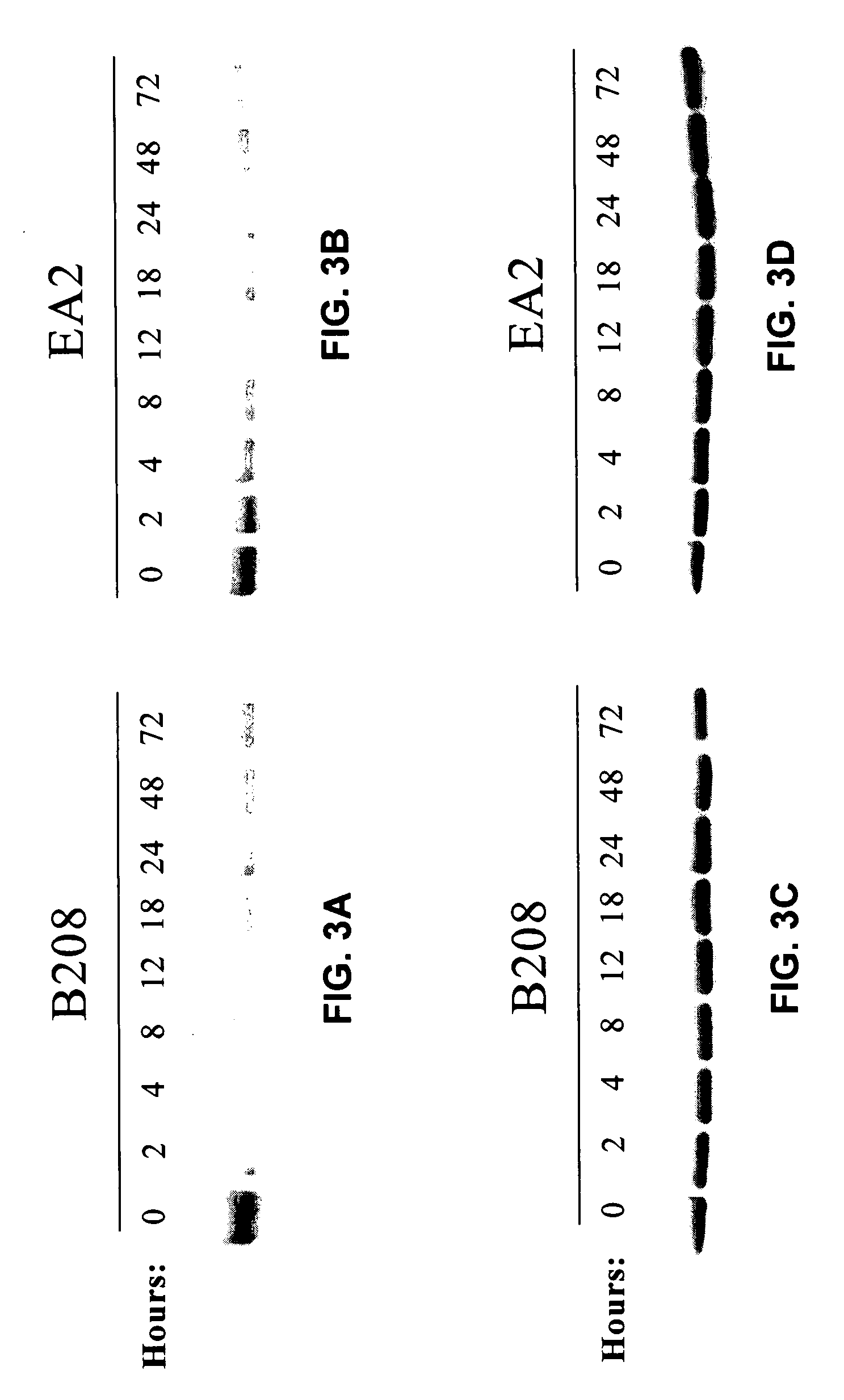EpA2 monoclonal antibodies and methods of use thereof
a monoclonal antibody and antibody technology, applied in the field of hyperproliferative cell disease treatment, management or prevention, can solve the problems of reducing the binding affinity of epha2-ligands, unable to stabilize interactions with ligands, and reducing cell-cell contact, so as to delay or minimize the onset of hyperproliferative disease, delay or minimize the spread of cancer, and improve the overall therapy
- Summary
- Abstract
- Description
- Claims
- Application Information
AI Technical Summary
Benefits of technology
Problems solved by technology
Method used
Image
Examples
Embodiment Construction
[0075] The present invention is based, in part, on the inventors' discovery that EphA2 monoclonal antibodies can inhibit cancer cell proliferation and invasiveness by reducing the levels of EphA2 expression in these cancer cells. Decreased EphA2 activity selectively inhibits malignant cancer cell growth. In particular, such decreased levels of EphA2 can be achieved with EphA2 agonistic monoclonal antibodies. Although not intending to be bound by any mechanism of action, this inhibition of cell growth and / or metastasis is achieved by stimulating (i.e., agonizing) EphA2 signaling thereby causing EphA2 phosphorylation which leads to the degradation of EphA2. Cancer cell growth is decreased due to the decreased EphA2 levels and, therefore, the decreased ligand-independent EphA2 signaling. Decreased EphA2 activity may also be achieved with EphA2 cancer cell phenotype inhibiting antibodies or antibodies that preferentially bind an EphA2 epitope exposed on cancer cells but not non-cancer c...
PUM
| Property | Measurement | Unit |
|---|---|---|
| volume | aaaaa | aaaaa |
| volume | aaaaa | aaaaa |
| total volume | aaaaa | aaaaa |
Abstract
Description
Claims
Application Information
 Login to View More
Login to View More - R&D
- Intellectual Property
- Life Sciences
- Materials
- Tech Scout
- Unparalleled Data Quality
- Higher Quality Content
- 60% Fewer Hallucinations
Browse by: Latest US Patents, China's latest patents, Technical Efficacy Thesaurus, Application Domain, Technology Topic, Popular Technical Reports.
© 2025 PatSnap. All rights reserved.Legal|Privacy policy|Modern Slavery Act Transparency Statement|Sitemap|About US| Contact US: help@patsnap.com



